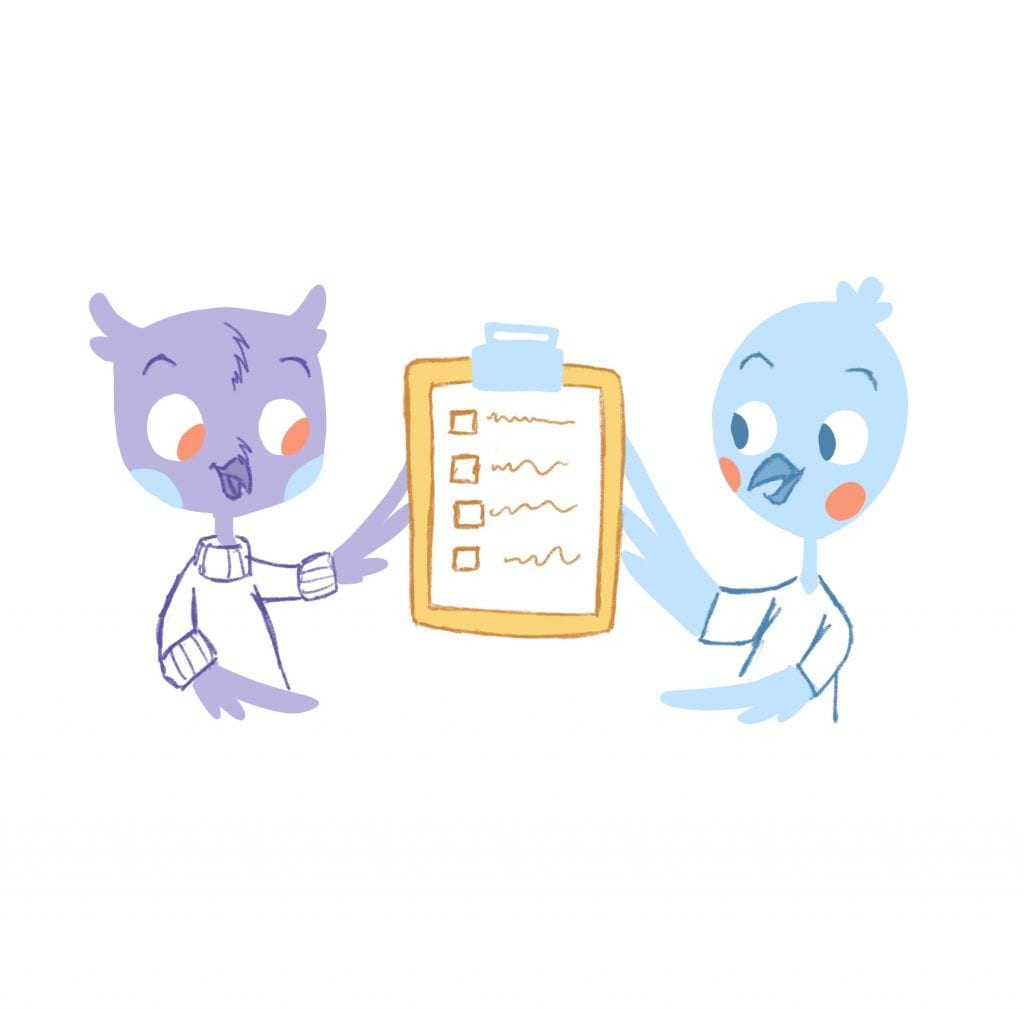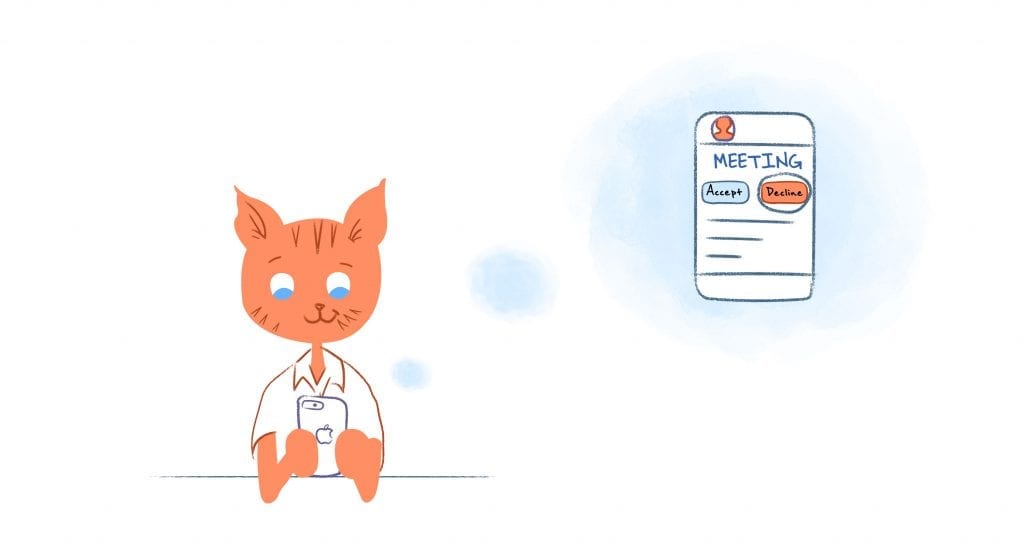

Like it or not, you will have to attend meetings throughout your professional career. There’s actually a reason why. Meetings can help you work toward a specific solution, resolve conflicts, and keep your time on the same page.
At the same time, they’re huge time wasters and loathed by most people.
However, if you use these 10 tips for making meetings more effect you may be able to reduce those gripes.
1. Make sure that the meeting is necessary.
There have been times when I was pulled away from my work to attend a meeting. Not the end of the world. That is until I quickly realized that the meeting wasn’t necessary. It’s something that could be handled over email or a quick call.
“Before holding a meeting, it’s important to ask yourself if it’s truly worth having,” writes Max Palmer in another Calendar article. “Can you cover what you need to say in an email? Can you have a “standing” meeting (a quick 5-10 minute informal meeting)? Does the whole team need to be there, or just the most relevant members for the project at hand?”
“These questions can help you decide if a meeting is truly required, or a waste,” adds Max.
2. Write an agenda — and send it in advance.
A meeting agenda establishes the main objective or objectives of the meeting. It should also include:
- Participants needed.
- Date and location of the meeting.
- The items that need discussion or action.
- The amount of time set aside for each discussion or action.
- Pre-work for the meeting.
Having an agenda reduces wasted time, encourages participation, and keeps the meeting on track.
After you’ve created an agenda, make sure that you send it out to participants at least 24 hours in advance.
3. Don’t invite the entire office.
You don’t want to exclude anyone involved with a project. But, when there are too many people attending a meeting you’re more likely to have more side conversations, interruptions, and unsolicited opinions. That definitely doesn’t make for an effective meeting.
Instead of inviting the entire office, only invite those who absolutely have to be in attendance, such as the key decision makers. You can keep everyone else updated by sending out an email containing a summary of the meeting.
4. Keep your audience engaged.
“Audience engagement is an integral part of business meetings and presentations,” says Renzo Costarella. “If you fail to connect with that audience, you may be losing out on potential business opportunities. Even worse, all that wasted time can cost your company big bucks.”
So how can you keep your audience engaged? Start by:
- Be authentic. Don’t be afraid to share some personal stories to help the audience connect with you.
- Speak “English.” This means not using jargon or complex words your audience won’t understand.
- Be humorous. A little humor will make your audience will be relaxed and engaged.
- Avoid hangouts during the meeting. Use whiteboards or screens during the meeting so that attendees aren’t distracted. Save the handouts for the end of the meeting.
- Encourage participation. Don’t be the only person speaking. Ask question and encourage discussions. When your audience participates in a meeting they’ll be more engaged.
5. Start and stop on time.
Be respectful of everyone’s time by setting a start and stop time. For example, if the meeting is scheduled from 3pm to 3:30pm, then that’s exactly when the meeting will start and end. Don’t wait for late comers and don’t go over the allotted time.
Having a specific start and stop time not only shows that you respect your attendees time, it will also guarantee that your meeting remains short, concise, and focused.
6. Apply the 80/20 rule.
The 80/20 rule, also known as the Pareto Principle, suggests that 20 percent of your activities will account for 80 percent of your results. So, how does that apply to meetings?
When creating your agenda place the top 20 percent of the meeting items as the first items to be discussed. This way if the clock is against you’ve still gone over the items that account for 80 percent of the value of the meeting.
7. Be flexible.
When preparing for your meeting you need to take into account your audience. This way you can cater the format, duration, and content just for them. For example, if you’re meeting with an investor who loves slides, then your meeting should include a well-prepared slide presentation.
At the same time, you also need to be flexible. Maybe that investor is groggy and doesn’t want to spend 20 minutes looking at slides. You may have to adjust your presentation so that the attention is just on your own and your enthusiastic vision of the future.
8. Implement a “no cell phones rule.”
Smartphones, while incredible and useful pieces of technology, are major distractions during meetings. Whether if it’s checking your email, updating your social channels, or just surfing the web, phones prevent attendees from being fully present and engaged.
The easiest way to solve this problem is by not allowing phones into the meeting.
This was a tactic used by President Obama when he was in office. Meeting attendees placed a sticky note on their phones with their name on it. At the beginning of the meeting the phones were placed into a basket and returned at the end. Simple and effective.
9. Have a standing meeting.
It’s not natural to stand for an extended period of time. But researchers have found that standing meetings are more creative, collaborative, and productive.
Andrew Knight of the Olin Business School at Washington University, said that, “these meetings always seemed more collective and interdependent than sitting meetings. Usually people were crowded around a whiteboard working diligently to resolve a pressing problem,” recalls Knight. “The meeting also seemed more efficient and purposeful.”
10. Assign tasks and follow-up.
Remember back in school when you were given homework or assignments? You knew exactly what had to be done and by when. The same is true of meeting.
When the meeting concludes participants should leave knowing exactly what they need to do. Steve Jobs called these these “DRIs” –“Directly Responsible Individuals.” By assigning tasks and responsibilities, while also clearly explaining what’s expected of them, you’ll improve productivity. What’s more, meeting goals will be easier to achieve.
Encourage your team to write these down by hand. But, you’ll also need to send out a follow-up email that recaps what was covered, which tasks were assigned to whom, and what happens next. This prevents confusion and keeps everyone on the same page.











Albert Costill
My name is Albert Costill and I'm a content marketer at Calendar. If I can help people become more productive in my journey, even better. If you ever have a question about your Calendar or how you can use it - - don't hesitate to reach out. I'm a Calendar Pro.